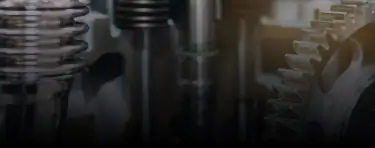Identical faults
The following faults are identical to P0171. For these, you can follow the information on this page:
P0174 – System Too Lean (Bank 2)
P0171 Code Definition
System Too Lean (Bank 1)
What Does the Engine Code P0171 Mean?
Character "P" in the first position of Diagnostic Trouble Code (DTC) represents the powertrain system (engine and transmission), "0" in the second position means that this is a generic OBD-II (OBD2) DTC. The "1" in the third character position in a DTC indicates that the fuel and air metering system is experiencing a malfunction. The last two characters "71" are DTC numbers. OBD2 Diagnostic Trouble Code P0171 indicates that the oxygen sensor in bank 1 has detected a lean condition (the engine either receives too little fuel or too much air). To enable a catalytic converter to operate at optimum efficiency, short-term fuel trim (STFT) and long-term fuel trim (LTFT) correct fuel delivery to the engine and maintain the optimal air/fuel combustion ratio close to 14.7:1 (14.7 parts air to 1 part fuel). In the lean condition, the air-fuel mixture contains more than 14.7 parts air to 1 part fuel.
Repair How To's for related faults
Carly's expert mechanics have identified the following related fault codes. With the information for these fault codes it is often possible to identify and better repair your faulty part/system:
Contents
Carly Universal Scanner

What Is the Cause of P0171?
While the most common causes of the P0171 code are a bad Mass Air Flow (MAF) and faulty O2 sensor, P0171 can also be caused by other issues:
Incorrect manifold absolute pressure sensor (MAP) or mass air flow sensor (MAF) sensor readings
A defective fuel injector
A lambda sensor defect
Leakage in the intake system/exhaust system
A defective air flow meter
What Are the Symptoms of Code P0171?
The main symptom to the driver is the illumination of the check engine light (CEL), also called a malfunction indicator lamp (MIL). The driver will likely notice only minor driveability problems, or none at all, although there may be the following symptoms:
Power loss
The engine running roughly
Jerking during acceleration
The engine takes longer to start
Higher fuel consumption
Misfires
Failure of emission inspections

How much does it cost to diagnose P0171?
Visiting a car repair shop and letting them perform a diagnostics check can cost you $60-$100. For almost the same price you can get Carly. Its advanced features can cover what a professional automotive scanner that costs over $3,000 would, and more!
Carly OBD2 ScannerWhich Tools Are Needed To Diagnose P0171?
To find out more about the P0171 code that is generated and stored in the Powertrain Control Module (PCM) of your car, the only tool you need is the Carly Universal OBD2 Scanner, which works for all car brands in the world with an OBD2 port. Carly is a revolutionary solution that allows you to access your car’s data with your phone and translates this information into powerful insights, predictions, and possibilities. This saves you trouble, time, and money.
How To Diagnose and Clear the Code P0171?
Performing a diagnostics check with a diagnostic scanner helps you identify a particular problem area that is outside the normal range and shows where a fault might be occurring. This helps you to detect errors before they cause more damage to your vehicle. In comparison to generic OBD devices that only provide OBD-level engine-related data, Carly can run advanced manufacturer-level diagnostics, check all your ECUs in your car (like ABS, airbag, multimedia) and get deeper insights. You can find additional information about the trouble code and understand the severity of the problem. With the new Smart Mechanic feature, you get additional professional insights and tips from expert mechanics. You are able to check components and their mechanics, find detailed repair tips, and learn about potential future damage. After you have fixed the problem you can easily clear the fault codes with Carly, too. Also, the diagnostic results are safely stored inside the app or as convenient PDF reports you can share with your friends or a mechanic.
Common Mistakes When Diagnosing the P0171 Code
The most common mistake is to look and try to fix each individual OBD2 code without having a holistic approach. Understanding the interrelationship of OBD-II (OBD2) systems is crucial to determining the root cause of the problem and finding the right solution. For example, a faulty Mass Air Flow Sensor can be a common cause for the code P0171. If the Air Flow Sensor is measuring reduced air supply because it is defective, the mixture control will try to compensate by injecting less fuel. If the O2-sensors then indicate a lack of fuel in the mixture, it does not make sense in this case to increase the fuel. As a result, the code P0171 arises. In this case, Oxygen Sensors would be accurate — the fuel mixture is too lean, but the real cause of the problem is a faulty Air Flow Meter or sensor reporting.
How Serious Is Code P0171?
While it is common for a driver to only experience minor driveability problems when the P0171 trouble code is present, driving with this code can overheat the engine and cause internal engine damage. If the engine does not maintain a proper air/fuel ratio, there will be a major waste of fuel. A lean running car can also misfire, which puts raw fuel (HCs) into the catalytic converter which can result in internal damage to the catalytic converter. To avoid the potentially high costs of further damages, it is recommended to have this code properly diagnosed and the problem solved as soon as possible.
How Can You Fix the P0171 Code?
One of the most common reasons for this error is a leak in the intake tract (from the mass air flow sensor to the throttle valve or intake manifold). Often a rubber hose or a small connection is leaking. The easiest way to check for this fault is using brake cleaner in a can (CAUTION: THIS SHOULD NOT BE DONE WITH DIRECT INJECTION ENGINES!). To do this, simply run the vehicle on idle and spray the brake cleaner on the intake (small amounts are more than sufficient here). If the speed changes at a certain point in the intake tract, the leak is exactly at this point and the error is in this area.
Another potential reason for this error may be a leaking exhaust. A lifting platform is helpful to visually check the exhaust for small cracks/holes. If there is a leak, it must be repaired and the fault must be reassessed.
If these errors are excluded, the error memory should be checked for other electrical errors that are related to the intake system, such as the lambda sensor or mass air flow sensor. If a fault is present here, these should be eliminated as they can trigger the fault. A defective injector can also cause this error if it is clogged or defective.

Estimated Cost of Repair for the P0171 Code
Depending on the root cause of the issue, one or more of the below repairs may be needed to fix the code P0171:
Clean MAF Sensor at around $100
Replace MAF Sensor at around $300
Replace lambda sensor $300-$400
Learn More About the P0171 Code
The functionality of mixture preparation
In the internal combustion engine, the air-fuel mixture is compressed and ignited in a mixture ratio suitable for ignition and combustion. In the gasoline engine, ignition is triggered by an electric spark (spark plug). In diesel engines, it is triggered by self-ignition (combustion pressure). The mixture formation begins when fuel is added to the intake air. The filling of the cylinders depends on the changing operating conditions (part load/full load) of the engine. The task of fuel metering is to adapt the fuel quantity to the respective air quantity. In the gasoline engine, there are two ways of doing this: The fuel quantity is allocated to the injection system or the air quantity is adjusted. Optimal ignition and combustion of the air-fuel mixture are only possible at a certain ratio. In the case of gasoline, the ratio for complete combustion of the fuel (stoichiometric ratio) is on average 14:1. This means about 14 kg of air is required for complete combustion of 1.
What is a mass airflow sensor and how does it work?
Mass air flow sensor constantly measures the amount and density of intake air going into an engine and sends that information to the Powertrain Control Module (PCM).
*Every car is unique. The Carly Features that your car supports depend on the model, build year, hardware, and software in the car. Plug the scanner in the OBD2 port, connect to the app, run your first diagnostics, and check which features are available for your car. Also, keep in mind that any information provided on this website is for informational purposes only and should be used at your own risk. Mycarly.com is not responsible for any errors or omissions, or for the results stemming from the use of this information.


